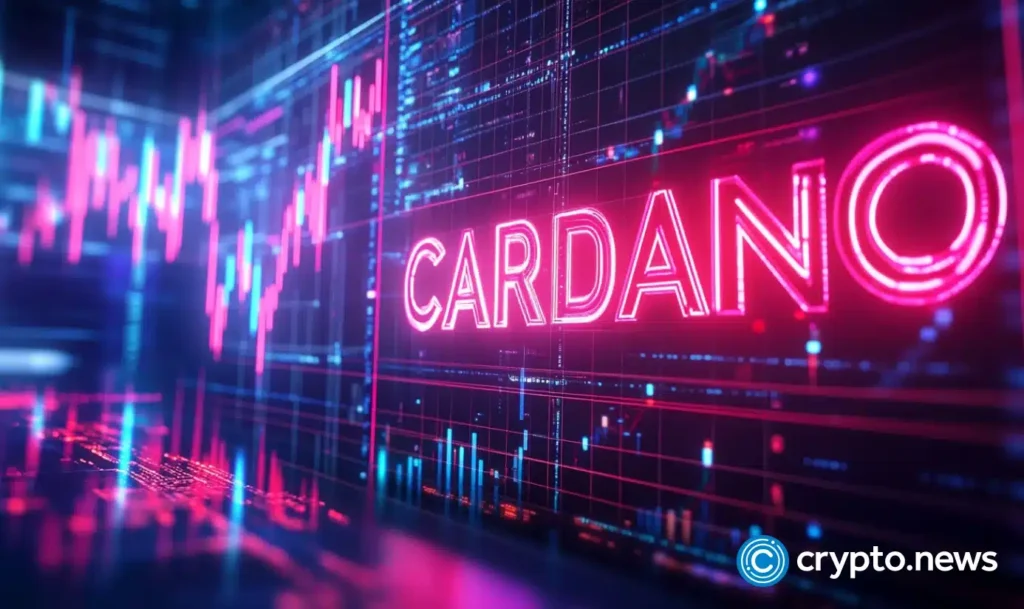Cardano has recently made some waves — in the past 24 hours, it briefly hit around $0.87 (as of July 20, 2025). It’s been a while since ADA climbed that high — the last time was back in May when it reached roughly $0.84.
In this piece, we’ll take a closer look at what Cardano (ADA) is, whether ADA will hit $10 by 2030, and what factors could influence that. So, what will ADA be worth in 2030?
What is Cardano?
Cardano is a smart contract platform that officially launched in 2017, built with a clear mission: to solve the core issues that have plagued earlier blockchains — namely, scalability, sustainability, and security. Unlike many projects that charge ahead with minimal testing, Cardano chose a different path. It was founded by Charles Hoskinson, one of Ethereum’s original co-founders, but it set itself apart early by following a slow, methodical, and research-first approach. Every update is peer-reviewed and rigorously tested, emphasizing academic research and formal methods — a rare trait in the fast-paced crypto world.
Cardano’s native token, ADA, is named in honor of Ada Lovelace — a 19th-century mathematician often recognized as the world’s first computer programmer.
ADA is more than just a cryptocurrency. It fuels the entire Cardano ecosystem. Token holders can use ADA to pay for transactions, stake their tokens to help secure the network, vote on governance proposals, and earn passive income through staking rewards. This creates an active, engaged community that helps guide the network’s direction — a kind of decentralized democracy in action.
Cardano is playing the long game, prioritizing solid infrastructure and real-world utility over flashy launches. It’s not the loudest voice in the room, but it’s quietly building a foundation designed to last — and in the ever-volatile world of crypto, that kind of discipline and patience stands out.
What exactly will shape Cardano’s price in the coming years, and what could the Cardano future price 2030 look like?
Cardano price factors
As of July 18, 2025, Cardano is sitting at $0.82, with a 2.55% bump in the last 24 hours and a solid 10.3% gain over the past week. That kind of movement isn’t going unnoticed — it’s a sign that investor interest is picking up, and momentum might just be building.
One key driver is the July 16 announcement from Apex Fusion, a next-generation blockchain protocol that builds on Cardano’s open-source foundations. The project revealed a strategic partnership with Well-Typed, a respected Haskell engineering firm with deep roots in Cardano’s early development, dating back to the Byron phase. This collaboration is set to strengthen VECTOR — Apex Fusion’s enterprise-grade implementation of the Cardano codebase, with advanced formal verification and high-assurance engineering. For long-term investors, this adds technical credibility and reinforces confidence in Cardano’s evolution as a secure and scalable blockchain platform.
That same day, Emurgo — one of Cardano’s founding organizations — introduced the Cardano Card, a multi-functional financial tool designed to bridge crypto with real-world utility. While it already works as a payment card, its roadmap goes much further: staking ADA, earning DeFi yields, accessing collateralized loans, and even channeling part of its revenue back into the Cardano treasury. This vision positions Cardano not just as a smart contract platform, but as a comprehensive financial ecosystem — a move that could boost long-term demand for ADA as adoption grows.
Developments like these could play a significant role in shaping Cardano’s trajectory. Many long-term holders and analysts are watching closely to see whether ADA can move beyond speculation and become a core infrastructure layer in the future decentralized economy.
What can we expect from the Cardano price in 2030? Could ADA retest or even surpass its 2021 all-time high of $3.10 in five years? These are the big questions — and as the project continues to evolve, many are eyeing the Cardano expected price in 2030 and setting a potential target price based on broader crypto market trends, adoption, and the project’s unique approach to sustainability and innovation.
Cardano price prediction 2030
When it comes to long-term ADA price forecasts, there’s no clear consensus — and honestly, the numbers are all over the place depending on who you ask.
CoinCodex takes a fairly modest approach, predicting that Cardano could be trading between $1.13 and $2.12 by 2030. It’s not the kind of forecast that gets headlines, but it does point to slow, steady growth — especially if Cardano keeps expanding its ecosystem and gaining real-world adoption.
Wallet Investor’s projections say ADA could hit $5.72 by July 2030, which would be a massive win for long-term holders. But their lower estimate? An eye-watering $0.000001 — worthless.
DigitalCoinPrice’s projections put ADA somewhere between $3.81 and $4.36 by the end of the decade. Those numbers suggest a strong belief in Cardano’s long-term potential.
Of course, these are just projections — not promises. Still, they offer a snapshot of what could be possible. Will Cardano hit the higher end of these predictions? Maybe. But if it sticks to its research-driven approach and continues to build real utility quietly, it might just surprise everyone by 2030.
Disclosure: This article does not represent investment advice. The content and materials featured on this page are for educational purposes only.
Read the full article here
